Dealing with a dog that has allergies can be a frustrating experience for any pet owner. Constant itching, skin rashes, digestive upset, and ear infections can significantly impact your furry friend’s quality of life. While identifying the specific allergen is crucial, choosing the right dog food plays a vital role in managing and minimizing allergic reactions. So, what exactly is the best dog food for dogs with allergies? Let’s explore the different types of hypoallergenic and limited ingredient diets available to help your sensitive pup thrive.
Understanding Dog Food Allergies
What is the Best Dog Food for Dogs with Allergies? A dog food allergy is an adverse reaction by the immune system to a specific ingredient in food, typically a protein. The body mistakenly identifies this ingredient as harmful and produces antibodies, leading to various allergic symptoms. It’s important to differentiate between a true food allergy and a food intolerance, where the body has difficulty digesting certain ingredients but doesn’t involve an immune response.
The most common food allergens in dogs include:
- Proteins: Beef, dairy, chicken, chicken eggs, soy, and wheat gluten are frequent culprits. Lamb, pork, fish, and corn can also trigger allergies in some dogs.
- Carbohydrates: While less common, some dogs can be sensitive to wheat or corn.
Interestingly, allergies can develop over time, even to foods your dog has eaten for a long period. This is why a sudden onset of allergic symptoms isn’t always linked to a new food.

Recognizing the Signs of Dog Food Allergies
Symptoms of food allergies in dogs can vary widely but often manifest as:
- Skin Issues: Itching (pruritus), excessive scratching, licking, and chewing (especially paws, face, ears, and belly), red and irritated skin, rashes, hot spots, hair loss.
- Ear Problems: Recurrent ear infections.
- Gastrointestinal Issues: Vomiting, diarrhea, increased frequency of bowel movements, gassiness.
- Other Signs: Hives, sneezing, conjunctivitis (red eyes), hyperactivity, weight loss, lack of energy, and in rare cases, even aggression.
The Cornerstone of Management: Dietary Elimination Trials
The most accurate way to diagnose a food allergy is through a dietary elimination trial, conducted under the guidance of your veterinarian. This involves feeding your dog a strict diet with ingredients they have never eaten before (a “novel protein” diet) or a hydrolyzed protein diet for 8-12 weeks.
- Novel Protein Diets: These diets feature single, uncommon protein sources like venison, duck, rabbit, kangaroo, or fish (like salmon). The idea is that your dog’s immune system is less likely to react to a protein it hasn’t been exposed to previously.
- Hydrolyzed Protein Diets: In these specialized veterinary diets, proteins are broken down into very small fragments (amino acids) that are too small for the immune system to recognize and react to.
During the elimination trial, it’s crucial to avoid all other foods, treats, supplements, and flavored medications to ensure accurate results. If your dog’s symptoms improve on the elimination diet, your veterinarian will then reintroduce previous foods one by one to pinpoint the specific allergen.
Choosing the Best Dog Food for Allergies: Key Considerations
Once an allergy is suspected or confirmed, selecting the right long-term food is essential. Here are the main types of dog food often recommended for dogs with allergies:
1. Limited Ingredient Diets (LID)
LID formulas are designed with a minimal number of ingredients, often focusing on a single novel protein source and a limited number of easily digestible carbohydrates. This simplicity makes it easier to identify and avoid potential allergens.
- Benefits: Reduces the risk of exposure to common allergens, easier to pinpoint triggers if a reaction occurs.
- Considerations: Ensure the LID food provides complete and balanced nutrition. Always check the full ingredient list carefully for potential cross-contamination or hidden allergens.
2. Novel Protein Diets
These diets utilize protein sources that are less frequently found in mainstream dog foods, such as:
- Venison
- Duck
- Rabbit
- Salmon
- Lamb
- Kangaroo
- Insect Protein (e.g., Black Soldier Fly Larvae)
- Benefits: Lower chance of triggering an allergic reaction if your dog hasn’t been exposed to that specific protein before.
- Considerations: Palatability can vary. Ensure the diet is nutritionally complete and balanced.
3. Hydrolyzed Protein Diets
(Alt text: A bag of veterinary-specific hydrolyzed protein dog food.)
These are typically prescription diets formulated by veterinary nutritionists where the proteins are broken down into very small, non-allergenic components.
- Benefits: Highly effective for dogs with severe or multiple food allergies as the immune system is less likely to react.
- Considerations: Usually requires a veterinary prescription and may be more expensive. Palatability can sometimes be an issue for some dogs.
4. Grain-Free Diets (Consider with Caution)
While some dogs are allergic to wheat or other grains, grain-free diets are not inherently hypoallergenic for all dogs. The primary allergens are usually proteins. If your dog isn’t specifically allergic to grains, a grain-free diet might not be necessary and could potentially have other health implications (discuss with your vet regarding Dilated Cardiomyopathy (DCM) concerns).
- Benefits: Helpful for dogs with confirmed grain allergies.
- Considerations: Not a solution for protein allergies. Ensure the diet is balanced and provides appropriate carbohydrates.
5. Homemade Diets (Under Veterinary Guidance)
(Alt text: A bowl of carefully prepared homemade dog food with fresh ingredients.)
In some cases, a carefully formulated homemade diet, created in consultation with a veterinary nutritionist, can be the best option for managing severe allergies. This allows complete control over the ingredients.
- Benefits: Total control over ingredients, avoids potential cross-contamination in commercial foods.
- Considerations: Requires careful planning and balancing of nutrients to avoid deficiencies. Can be time-consuming and may require supplementation.
Key Ingredients to Look For (and Avoid)
When choosing a food for your allergic dog, pay close attention to the ingredient list:
- Look For: Single novel protein sources, easily digestible carbohydrates (like sweet potato or rice, if tolerated), omega-3 fatty acids (to support skin health), and a short, clear ingredient list.
- Avoid: Common allergens your dog has reacted to (once identified), artificial colors, flavors, and preservatives, and excessive fillers. Be cautious with “by-products” as their protein source can be unclear.
Transitioning to a New Food
When switching your dog to a new food, especially a hypoallergenic diet, do so gradually over 7-10 days. Mix a small amount of the new food with their old food, gradually increasing the proportion of the new food each day to minimize digestive upset.
The Importance of Veterinary Guidance
Choosing the best dog food for allergies is a critical decision that should always involve your veterinarian. They can help you:
- Accurately diagnose food allergies through elimination trials.
- Recommend appropriate hypoallergenic or limited ingredient diets based on your dog’s specific needs and allergy history.
- Rule out other potential causes of your dog’s symptoms.
- Monitor your dog’s response to the new diet.
Conclusion: Finding Relief for Your Allergic Dog
Managing dog food allergies requires patience, careful observation, and close collaboration with your veterinarian. By understanding the different types of hypoallergenic and limited ingredient diets available and following a systematic approach to identification and dietary management, you can significantly improve your dog’s comfort, health, and overall quality of life, allowing them to live a happier, itch-free existence.



